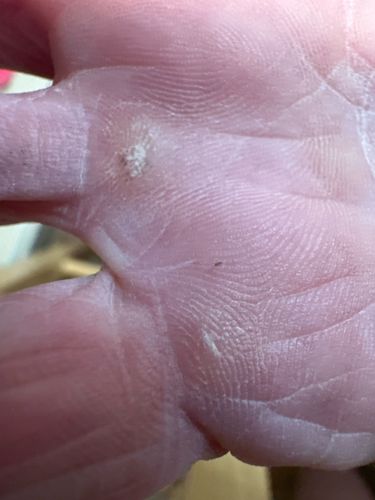Human Scabies Mite
Scientific Name: Sarcoptes scabiei var. hominis
Order & Family: Order: Sarcoptiformes; Family: Sarcoptidae
Size: Females are typically 0.3-0.45 mm long and 0.25-0.35 mm wide; males are about half that size, 0.2-0.25 mm long and 0.15-0.2 mm wide. They are microscopic and barely visible to the naked eye as tiny white dots.

Natural Habitat
The epidermis (outer layer of skin) of humans, particularly in warm, moist areas such as between fingers, wrists, elbows, armpits, and genital areas. They can also be found in skin folds and under nails.
Diet & Feeding
Skin cells (keratin) and tissue fluids of their human host. They do not consume blood.
Behavior Patterns
Sarcoptes scabiei are obligate human parasites, spending their entire life cycle on or in the skin of their host. Females burrow into the stratum corneum, creating tunnels where they lay eggs for 30-60 days. Larvae hatch and mature to adulthood over 10-17 days. They are most active at night, which contributes to the intense nocturnal itching characteristic of scabies.
Risks & Benefits
Potential Risks: Scabies is highly contagious and causes intense itching, skin rashes, and characteristic burrow marks. Secondary bacterial infections (e.g., impetigo, cellulitis) can occur due to scratching. In immunocompromised individuals, it can lead to crusted scabies (Norwegian scabies), a severe form with widespread skin lesions and high mite burden, which is extremely contagious. There are no known benefits to humans or the ecosystem from this parasite.
Identified on: 8/21/2025